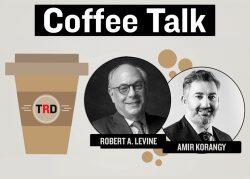Before prolific developer Robert Levine was building record-setting penthouses in Brooklyn or boutique lodging on the ski slopes of Colorado, he started out with one abandoned firehouse in Hempstead, New York.
Levine, a Flatbush native, made a name for himself developing luxury apartments, condominiums and resorts across the country, plus a few in Jamaica, Puerto Rico and the Cayman Islands.
The RAL Companies founder began his career as an architect in Long Island. His early firm, RAL Design Associates, started out working on shopping centers and fast food chains.
A supermarket project in the early eighties led the RAL team to the village of Hempstead, New York. There, they drove by a three-story, derelict firehouse on Fulton Avenue.
“It really had very little value. I mean, it was totally inhabited by pigeons,” Levine said. “Somebody other than somebody in design and construction probably would have looked at it and said, ‘Knock the building down’.”
RAL Design Associates purchased the building from Hempstead for around $50,000 in 1981 and began extensive renovations. Levine said the acquisition marked the beginning of his understanding of how to finance and carry out ambitious projects. The redesign was cutting-edge for the time — glass block partitions, high ceilings and exposed brickwork.
“It was quite an attractive office,” Levine said. “And it led to many other projects.”
Levine’s focus shifted from architecture to development as his young firm applied their adaptive reuse model to local abandoned buildings, and conversions eventually transformed into new construction. The group restored the nearby Hempstead Theater with its gilded dome and leased it to the New York State Department of Motor Vehicles; the department eventually commissioned RAL to build a brand new office building in Amityville.
Throughout his career, Levine kept an eye out for unique projects like the firehouse. As he told TRD, an undeveloped parcel of land that he spotted while skiing in Telluride, Colorado, in 1995 turned into the 55,000-square-foot Inn at Lost Creek.
In 2002, a church group eventually took the Hempstead properties on Fulton Avenue off Levine’s hands in 2002 for $1.1 million, and RAL set its eyes on wider horizons.
Eventually, the firm moved into another conversion: the building now known as Tower 270 in Tribeca. RAL Companies purchased it from the state for $33.6 million in a record-setting property sale, according to CityRealty.
The company moved onto major conversions and new constructions across lower Manhattan. It has since expanded into neighboring boroughs with notable projects like One Brooklyn Bridge Park and Quay Tower. In addition to ongoing work in the city, it is working on new projects across the country in Colorado and New Mexico.
Levine said he continues to be inspired by the lifecycle of buildings, including the building that took his career from design to development.
Last he checked, the firehouse had been converted into apartments.
Read more



